
20-12-2025 23:08
Patrice TANCHAUDBonsoir, récolte sur sol sablonneux dans l'arri�

21-12-2025 09:32
Hello.A tiny ascomycete found embedded in wood in

20-12-2025 15:47
Mirek GrycHi.These grew on pine wood that was heavily covere

18-12-2025 21:17
Pol DebaenstThe identification took me to Byssonectria deformi

15-12-2025 07:09
 Danny Newman
Danny Newman
indet. Rutstroemiaceae sp. on unk. fallen leavesMc

19-12-2025 10:10
Patrice TANCHAUDBonjour, récolte réalisée en milieu dunaire, a

18-12-2025 17:23
 Bruno Coué
Bruno Coué
Bonjour,je serais heureux d'avoir votre avis sur c

18-12-2025 18:07
Margot en Geert VullingsThese plumes were found on rotten wood.They strong
What could this be?
Gerrit Jansen,
27-03-2014 15:38
 Hi all,
Hi all, Could anyone give me an idea what this could be?
Thanks, Gerrit
On fallen branch of Salix. Apothecia diam 0.3-0.4 (0.5) mm, sessile.
Ascus contains 8 spores, iodine positive, 69-66 x 9-10 ?m, croziers present.
Paraphyses cylindrical width 2-3.5 ?m.
Spores non septate, 7-16.5 x 2-3.5 ?m; Qav.=4.4; n=15; spores taken from apothecium in Congo red in 5% ammonia.
Chris Yeates,
27-03-2014 16:28

Re : What could this be?
Hello Gerrit
have you checked to see if there is a KOH reaction?
regards
Chris
have you checked to see if there is a KOH reaction?
regards
Chris
Gerrit Jansen,
27-03-2014 16:52

Re : What could this be?
Hi Chris,
The apothecium turns yellowish greenish in 5% KOH.
Gerrit
The apothecium turns yellowish greenish in 5% KOH.
Gerrit
Luc Bailly,
27-03-2014 18:30
Re : What could this be?
Hi Gerrit,
Also: could you take the size of spores just in water? In Congo read, that will disturb the measures. Check also if the spores aren't septate now and then.
Looking at the spores in water is absolutely necessary, because NH4OH and KOH can influence the number and look of the guttules.
Then, take Andreas Gminder's key: http://www.mollisia.de/Word_Dokumente/key.doc
Cheers - LUC.
Also: could you take the size of spores just in water? In Congo read, that will disturb the measures. Check also if the spores aren't septate now and then.
Looking at the spores in water is absolutely necessary, because NH4OH and KOH can influence the number and look of the guttules.
Then, take Andreas Gminder's key: http://www.mollisia.de/Word_Dokumente/key.doc
Cheers - LUC.
Gerrit Jansen,
27-03-2014 21:32

Re : What could this be?
Hi Luc and Chris,
I measured the spores in water 12.7 x 2.9 um.
Thanks for the link to Andreas Gminders Mollisia key. With your help and the key I quickly arrived at Mollisia fusca.
Problem solved, thanks again.
Regards, Gerrit
I measured the spores in water 12.7 x 2.9 um.
Thanks for the link to Andreas Gminders Mollisia key. With your help and the key I quickly arrived at Mollisia fusca.
Problem solved, thanks again.
Regards, Gerrit

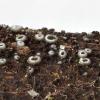
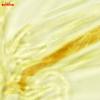
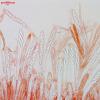
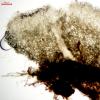

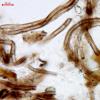
 fusca-6D-214800-Mollisia-fusca-0001.pdf
fusca-6D-214800-Mollisia-fusca-0001.pdf